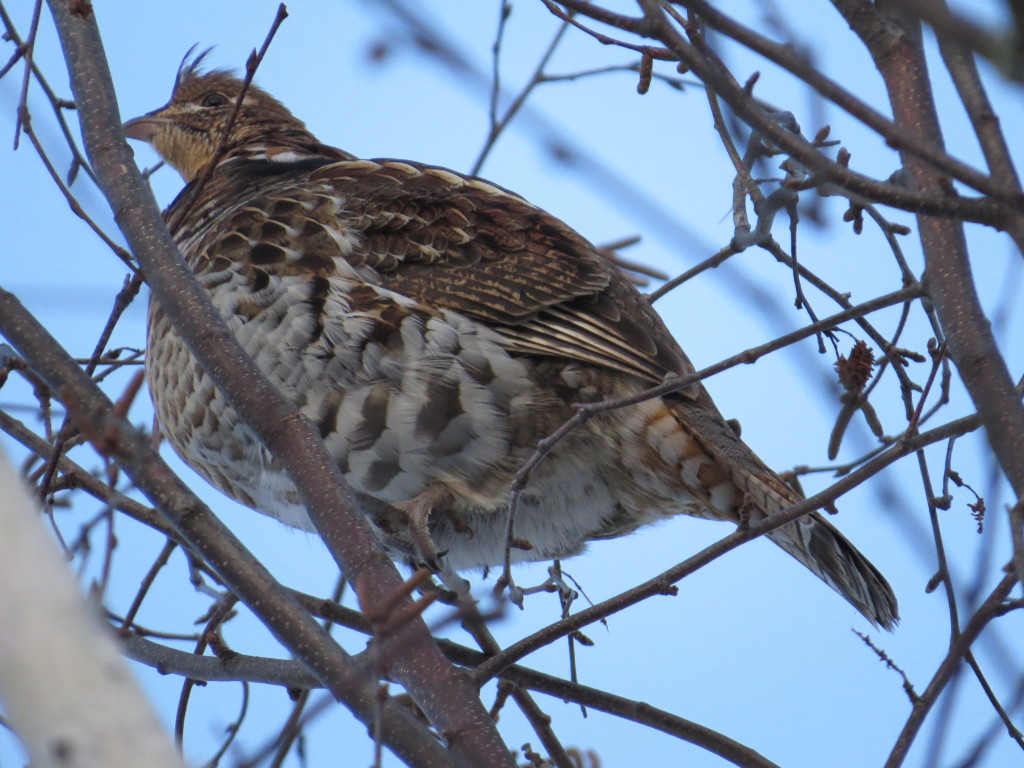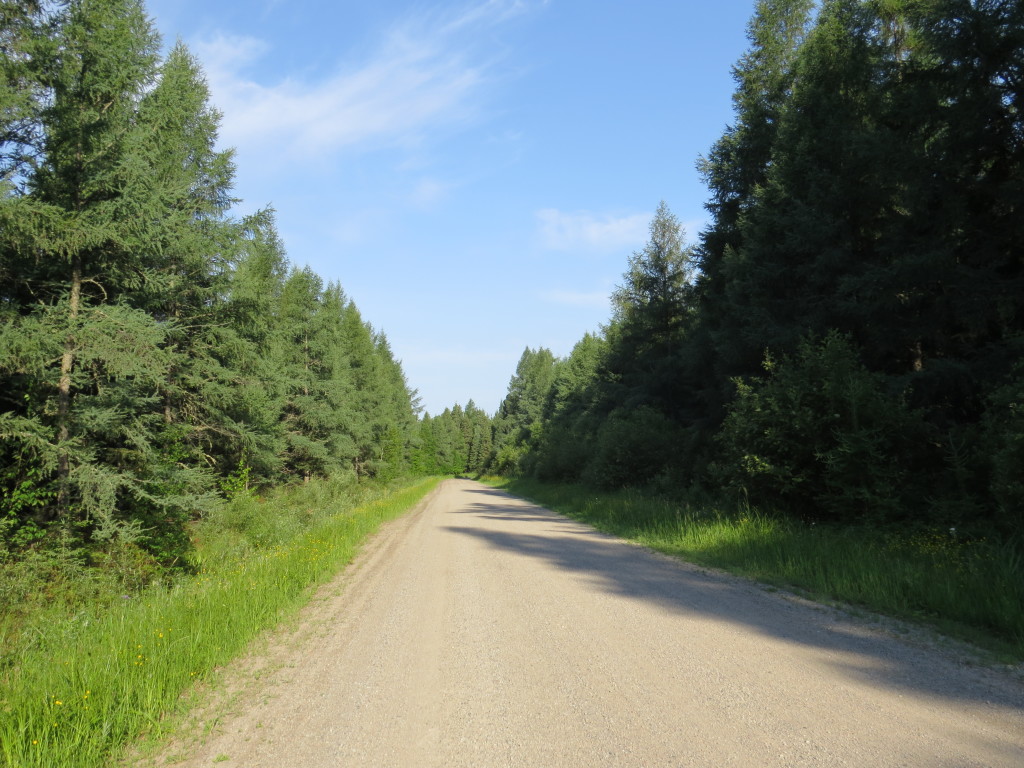 Northern Minnesota is home. Every season offers up something special in terms of wildlife and scenery. I was able to get out and do some birding in the forests, bogs, and open country on the same recent trip that included the Blackburnian Warbler. Cool stuff abounds everywhere here. It was good to be home.
Northern Minnesota is home. Every season offers up something special in terms of wildlife and scenery. I was able to get out and do some birding in the forests, bogs, and open country on the same recent trip that included the Blackburnian Warbler. Cool stuff abounds everywhere here. It was good to be home.
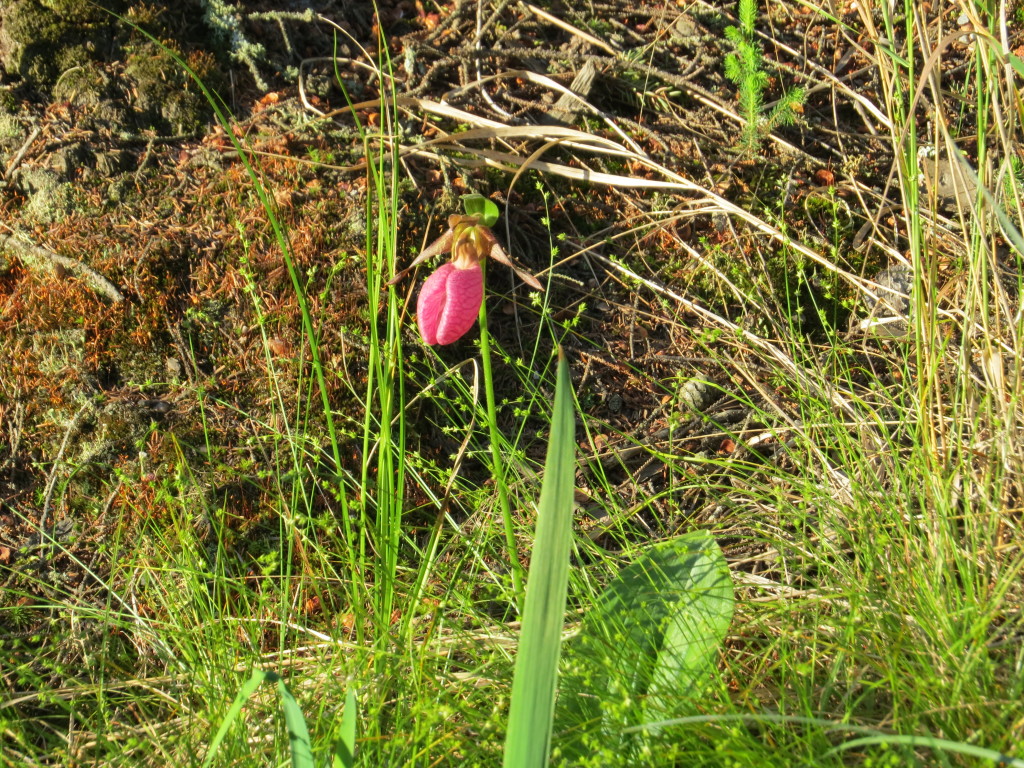
Pink Lady Slipper (Not MN’s State Flower, the Showy Lady Slipper)
Tamarack bogs like the one pictured above get a lot of attention from birders in the winter because of the Owls and some other boreal specialties. In the summer, though, they are not visited by birders as much. It’s too bad because they are quite lush and beautiful and the polar opposite of the forests of the seemingly dead Tamaracks. I say seemingly because Tamaracks drop their needles after turning a beautiful golden yellow in the fall, leaving dead-looking trunks and branches.
This particular bog was home to the Blackburnian Warbler I showcased in the last post, but there were also some other fun birds in this area. The Blackburnian was a happy accident; I had actually gone to this spot to look for some Boreal Chickadees that local birder Julie Grahn had told me about. I found them, and they were literally sharing turf with the Blackburnian. They were not as cooperative though, refusing to come out of the Spruce tops.
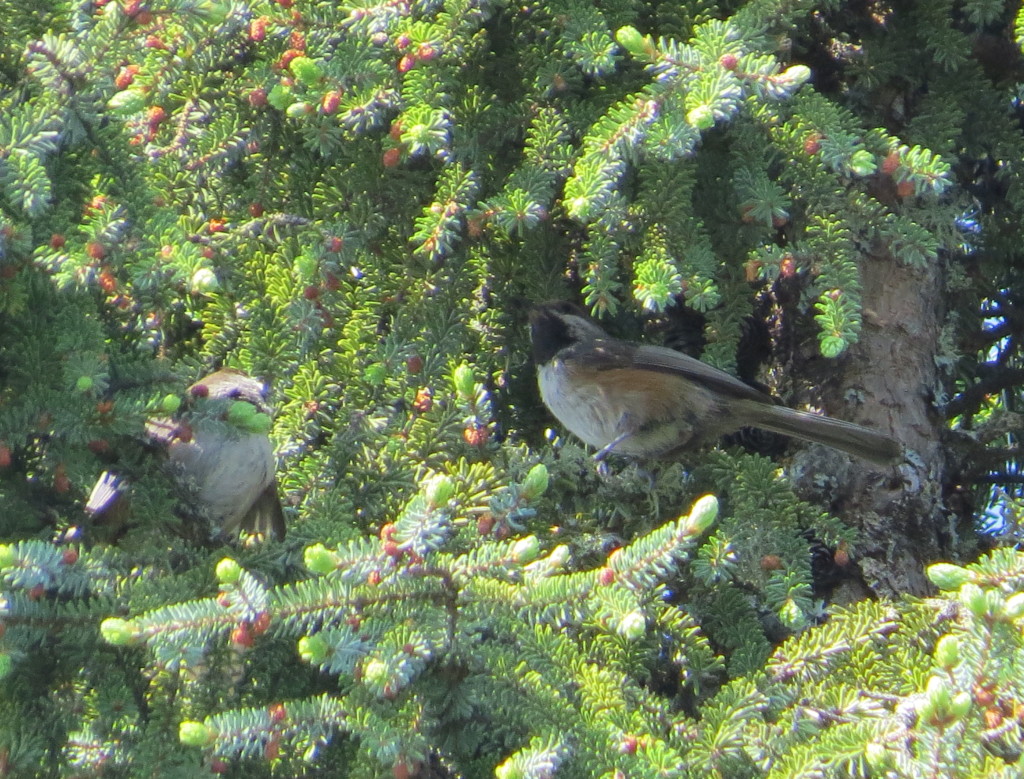 Judging from my picture, it appears that this was a family group with a couple fledglings! This Chickadee is so cool. Most MN birders only see them in the dead of winter when they come out to the remote feeding station on Admiral Road in the Sax-Zim Bog. I was very pleased to see BOCH in the summer and much closer to home than SZ.
Judging from my picture, it appears that this was a family group with a couple fledglings! This Chickadee is so cool. Most MN birders only see them in the dead of winter when they come out to the remote feeding station on Admiral Road in the Sax-Zim Bog. I was very pleased to see BOCH in the summer and much closer to home than SZ.
Sharing space with the Boreal Chickadees and Blackburnian Warbler were numerous Nashville Warblers whose song I just learned. I am now just starting to learn the songs of the more common Warblers that I see during migration. I tend to photograph common birds last too, so on this day I finally got some shots of the Nashville.
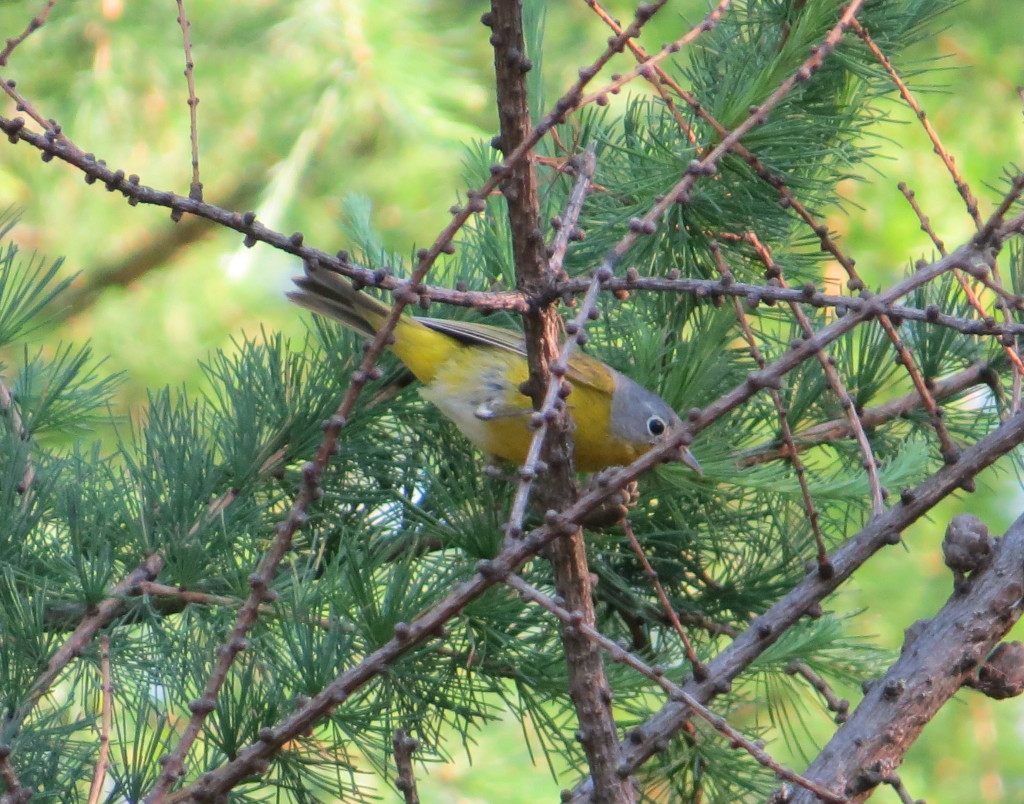
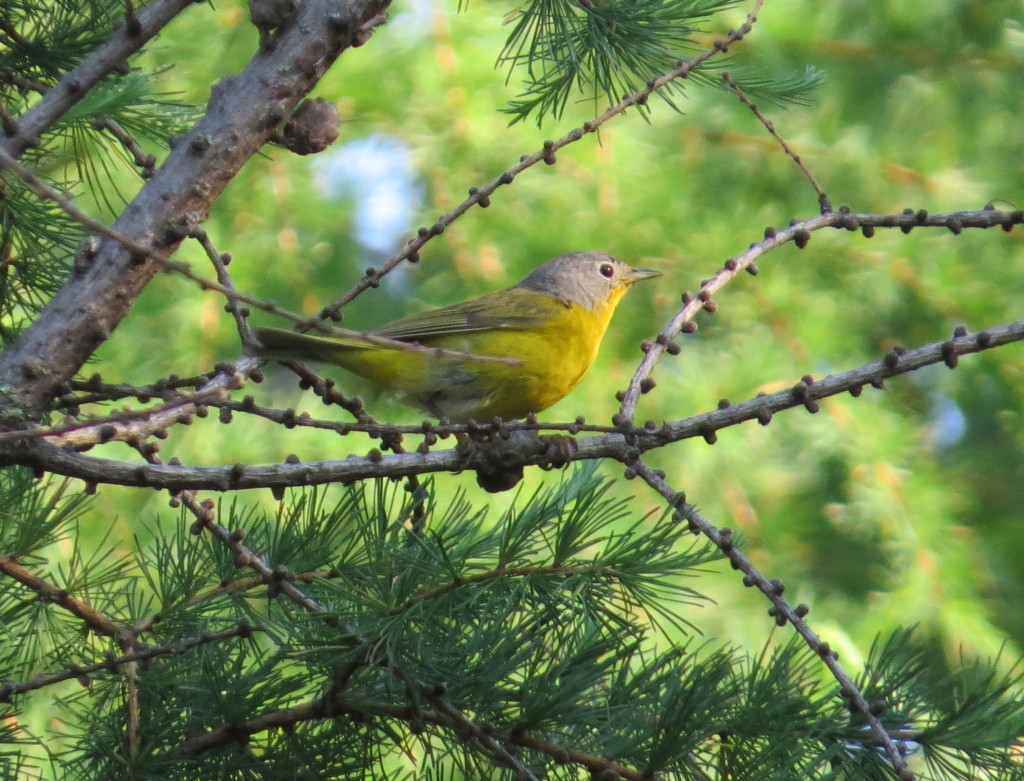 Another fun bird to see even if it couldn’t be seen well was the Lincoln’s Sparrow.
Another fun bird to see even if it couldn’t be seen well was the Lincoln’s Sparrow.
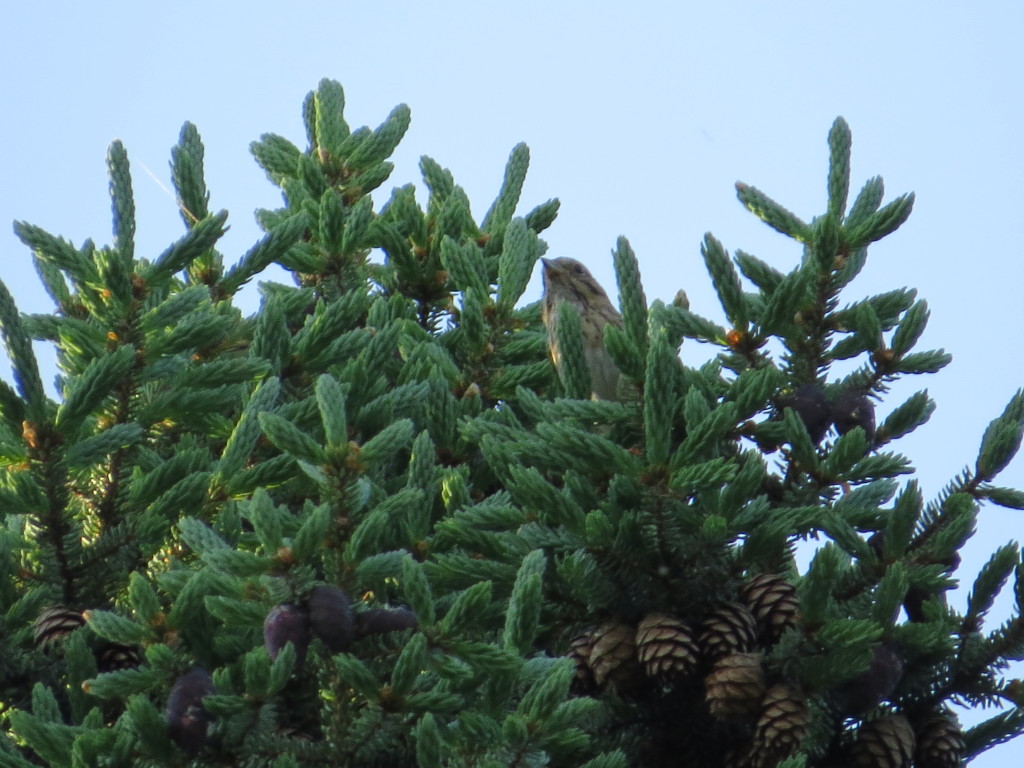 The varied habitats in northern MN offer up some unique opportunities for viewing wildlife. While looking for an American Bittern lifer in a marsh near my parents’ house, I found this gal looking for a place to lay her eggs.
The varied habitats in northern MN offer up some unique opportunities for viewing wildlife. While looking for an American Bittern lifer in a marsh near my parents’ house, I found this gal looking for a place to lay her eggs.
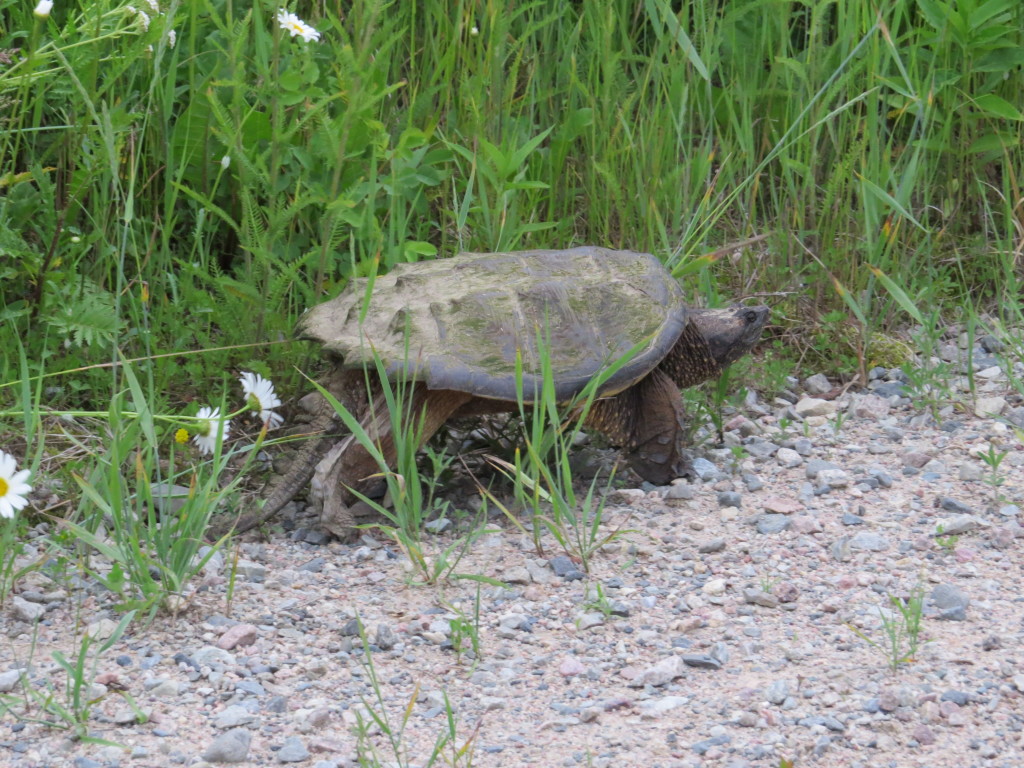 It was not the biggest Snapper I’ve seen. This one’s shell was the size of a dinner plate. I’ve seen them twice as big before.
It was not the biggest Snapper I’ve seen. This one’s shell was the size of a dinner plate. I’ve seen them twice as big before.
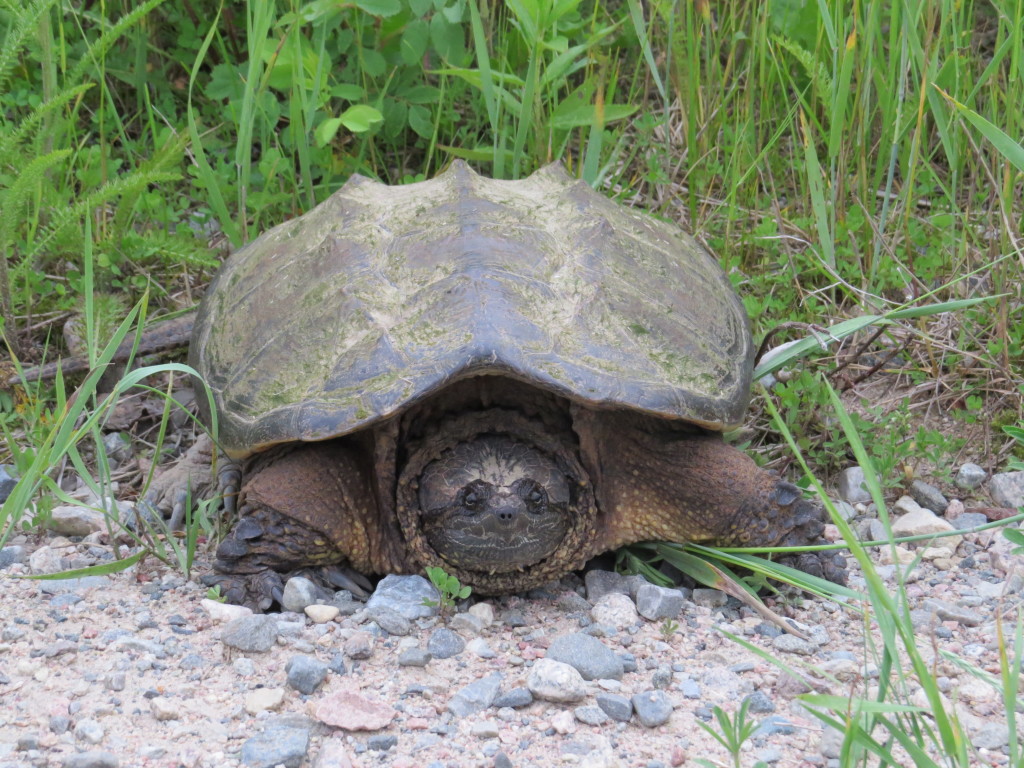 I didn’t spend a lot of time in the mature, upland woods other than just passing through. That was enough to nab my FOY Blue-headed Vireo that I missed during migration.
I didn’t spend a lot of time in the mature, upland woods other than just passing through. That was enough to nab my FOY Blue-headed Vireo that I missed during migration.
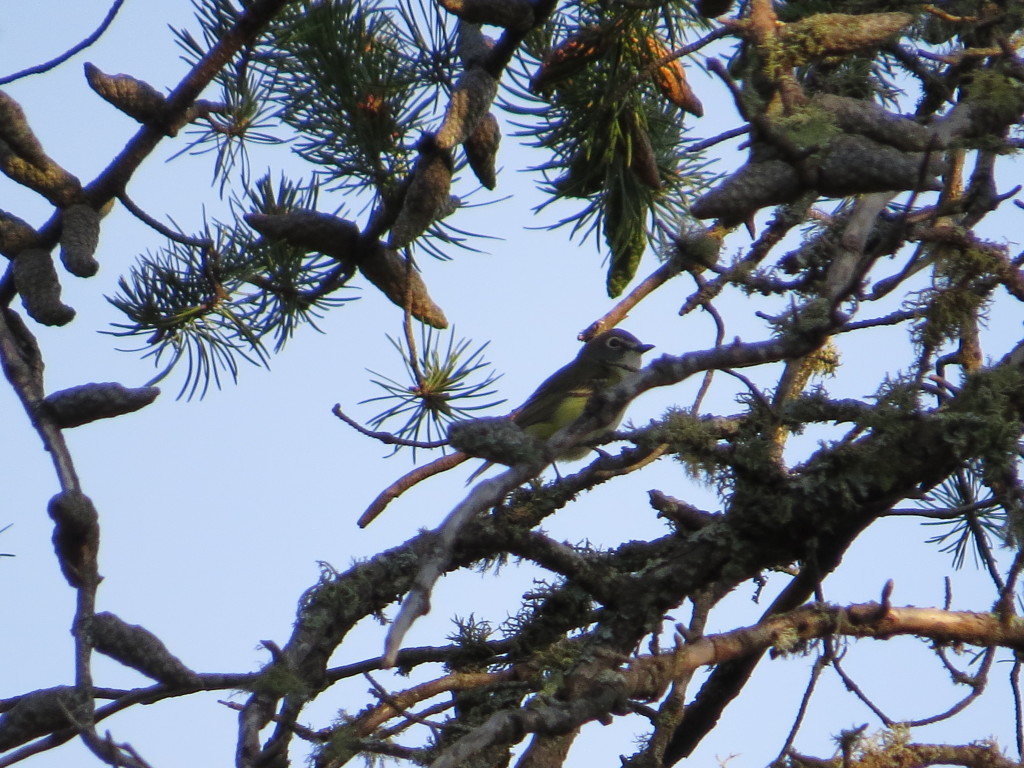 This bird has never been good to me. It was once a nemesis and continues to be a photographic nemesis. By the time I figured out its rhythm of jumping to a new perch each time after it sang, the bird disappeared from sight.
This bird has never been good to me. It was once a nemesis and continues to be a photographic nemesis. By the time I figured out its rhythm of jumping to a new perch each time after it sang, the bird disappeared from sight.
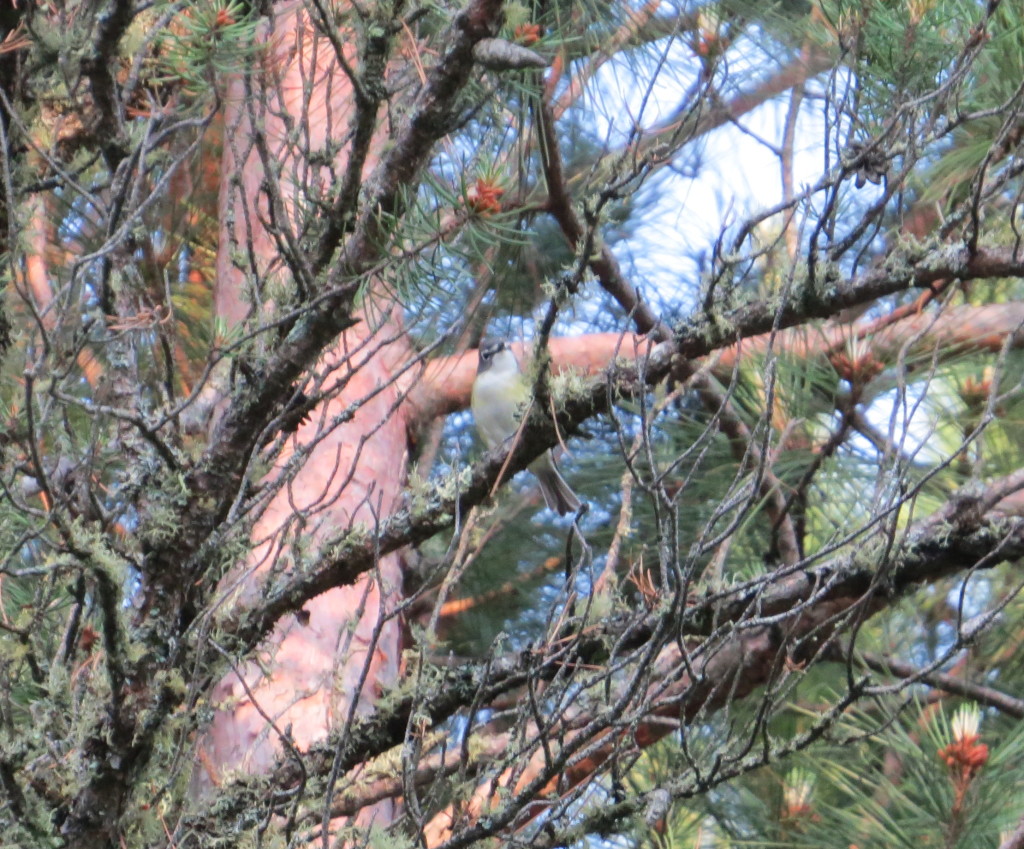
In the area of the Iron Range we call home, there is a substantial amount of open farm country, mostly hay fields and no crops. Still, the grasslands and horse farms are great for some good non-forest birds, the best of which was a pair of Black-billed Magpies. Julie Grahn had told me about these, and I’ve been seeing this species more and more every time I go up north. It’s been stated that the Sax-Zim Bog is the furthest east this species breeds. Well, this location was even further east yet, so it’s a pretty exciting find!
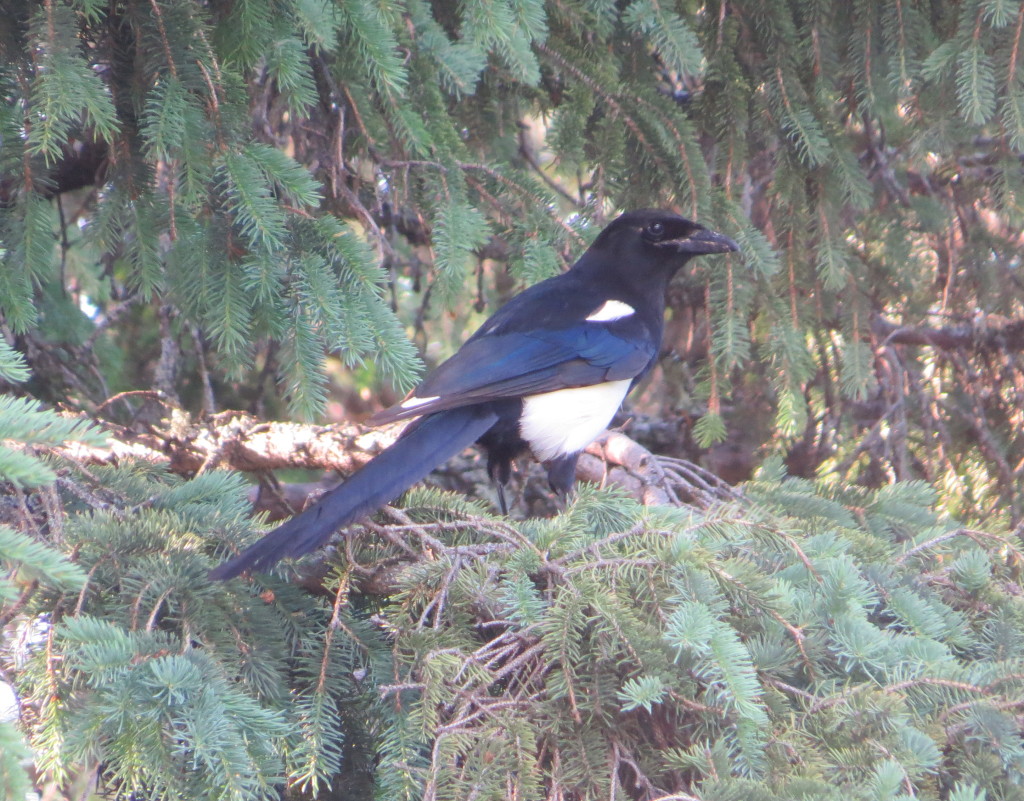 Also found in an open area was a bird that I have seen so many times this year and never before in the Northland, the Brown Thrasher.
Also found in an open area was a bird that I have seen so many times this year and never before in the Northland, the Brown Thrasher.
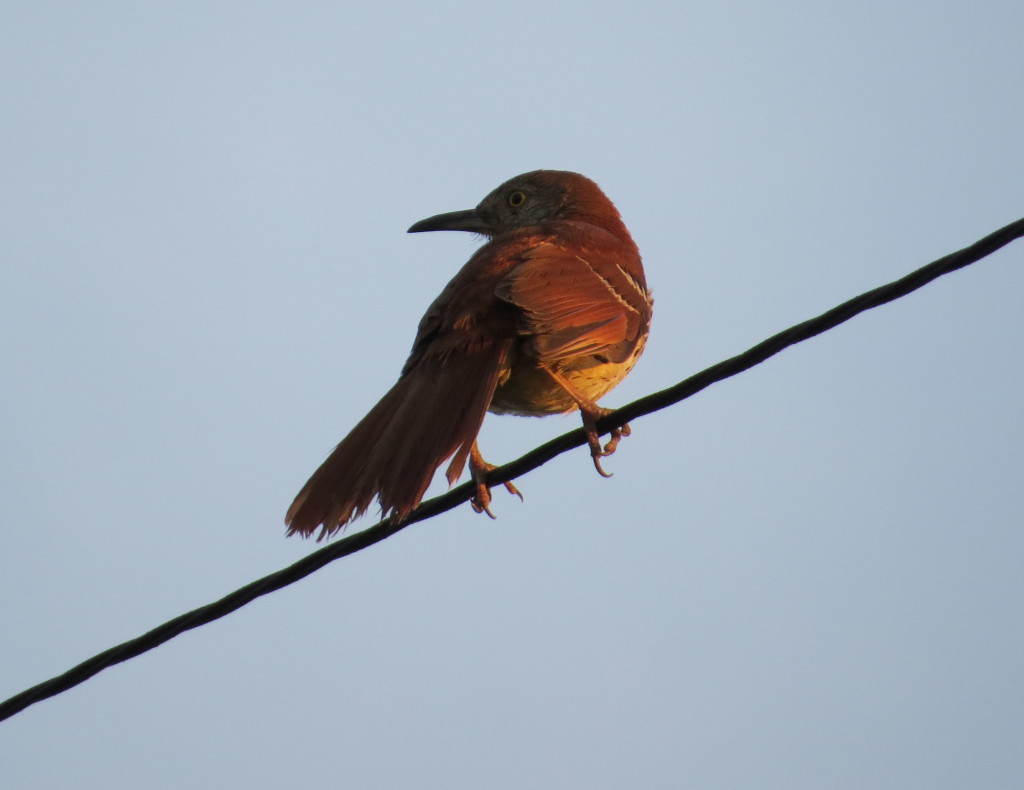 One bird that favors the open grassy fields that intersperse the Northwoods are the showy, and unique-sounding Bobolinks. They must be having a good year because I saw so many.
One bird that favors the open grassy fields that intersperse the Northwoods are the showy, and unique-sounding Bobolinks. They must be having a good year because I saw so many.
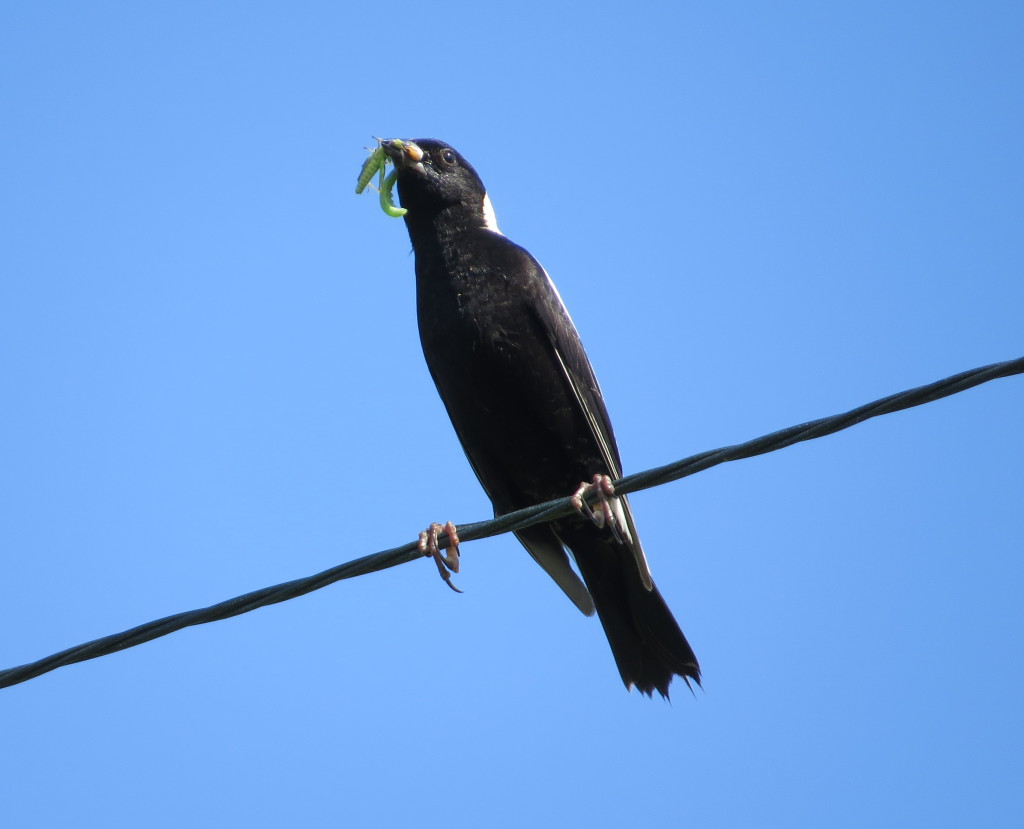
They were also more cooperative than I’ve ever seen them before. It felt good to finally photograph a BOBO properly.
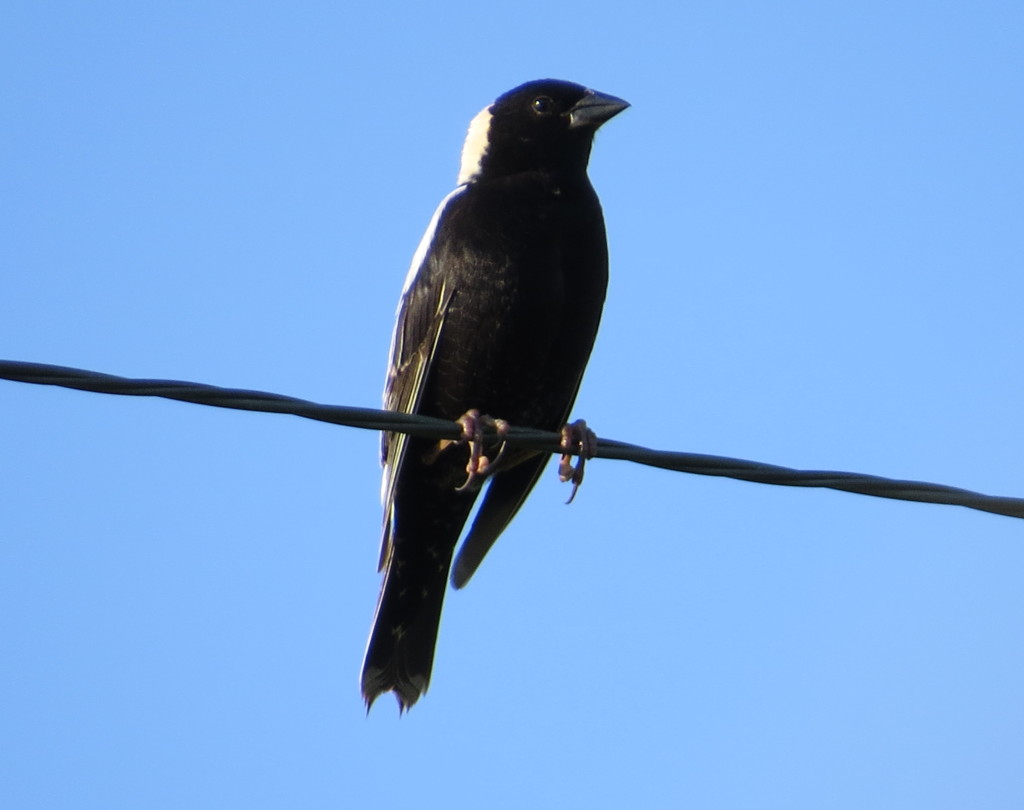
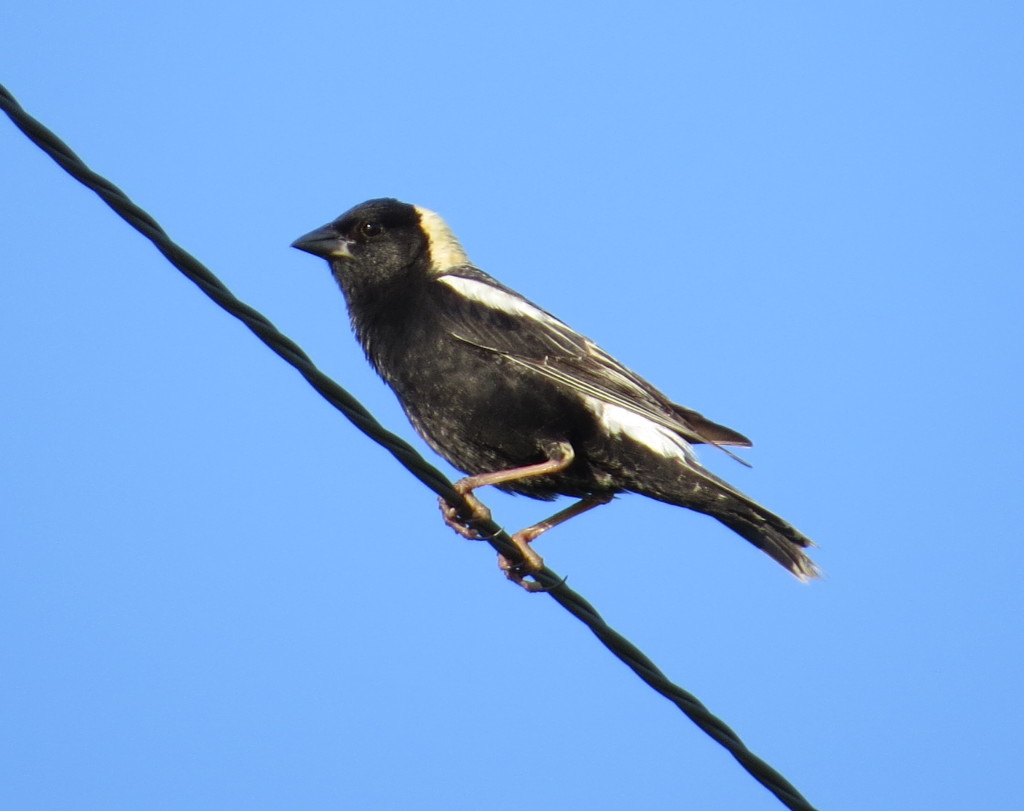
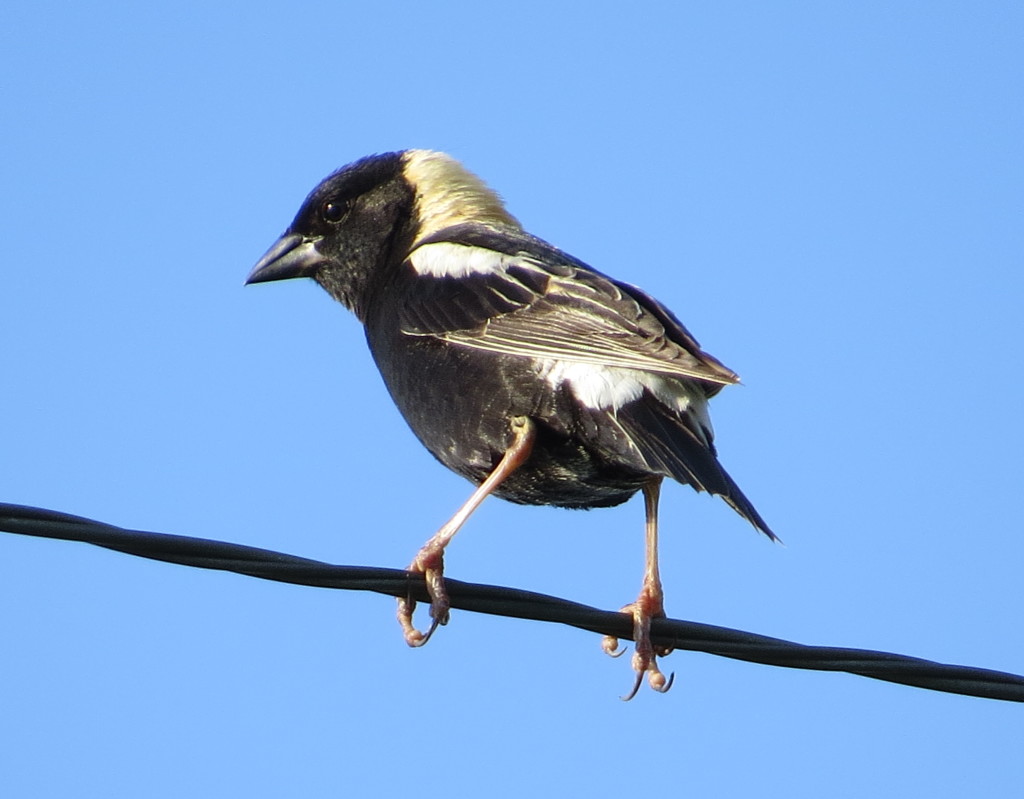 One bird that I was absolutely surprised to find in the open fields were Brewer’s Blackbirds! I had no idea they were in the area. Honestly, I often just dismiss most blackbirds I see as Red-winged Blackbirds or Common Grackles. Needless to say I was pleasantly surprised when I saw the Brewer’s. Like the Bobolink, it was nice to finally be able to get some decent photos of this bird too.
One bird that I was absolutely surprised to find in the open fields were Brewer’s Blackbirds! I had no idea they were in the area. Honestly, I often just dismiss most blackbirds I see as Red-winged Blackbirds or Common Grackles. Needless to say I was pleasantly surprised when I saw the Brewer’s. Like the Bobolink, it was nice to finally be able to get some decent photos of this bird too.
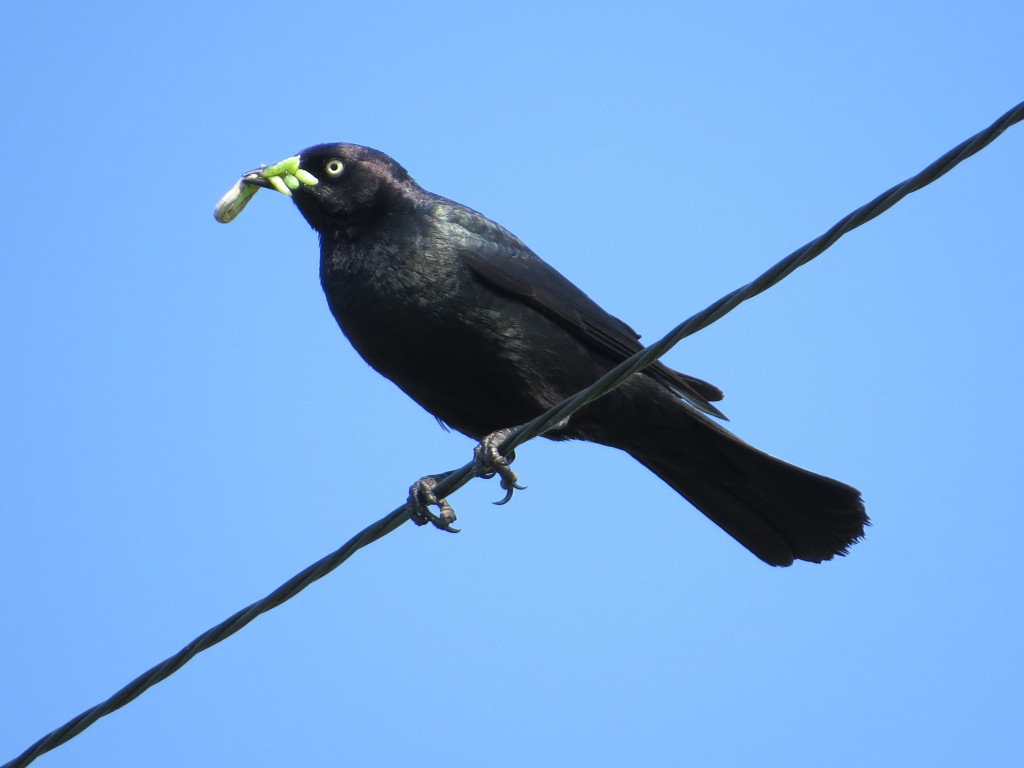
This dad was busy feeding a fledgling. I was scolded often during this photo shoot.
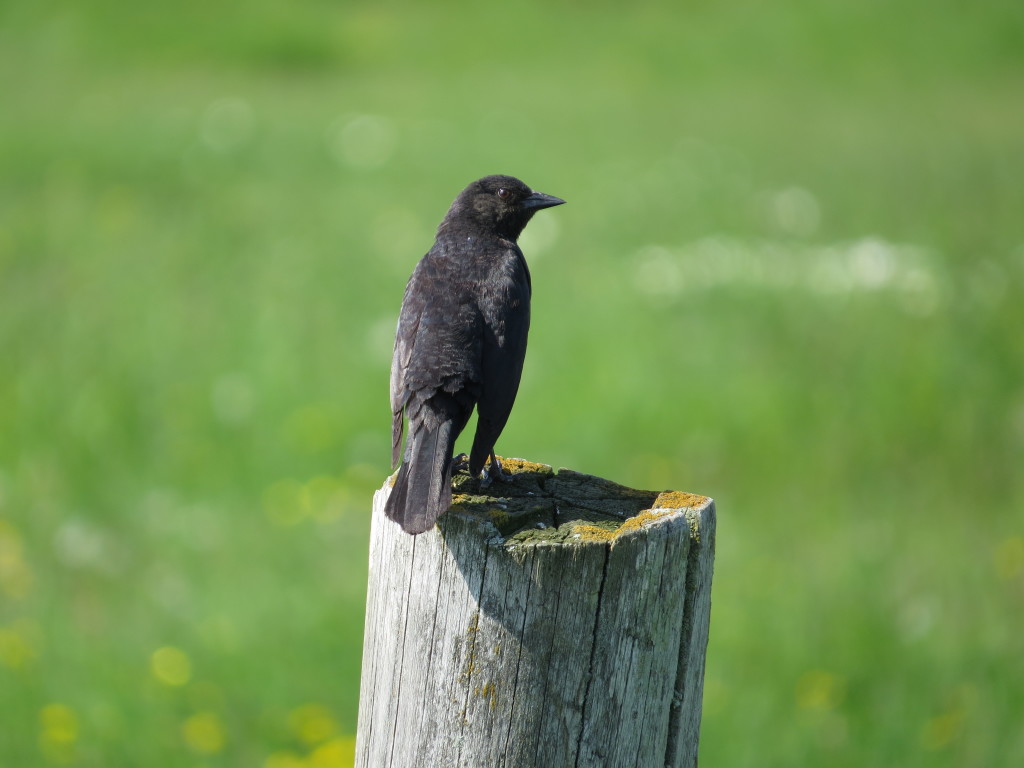
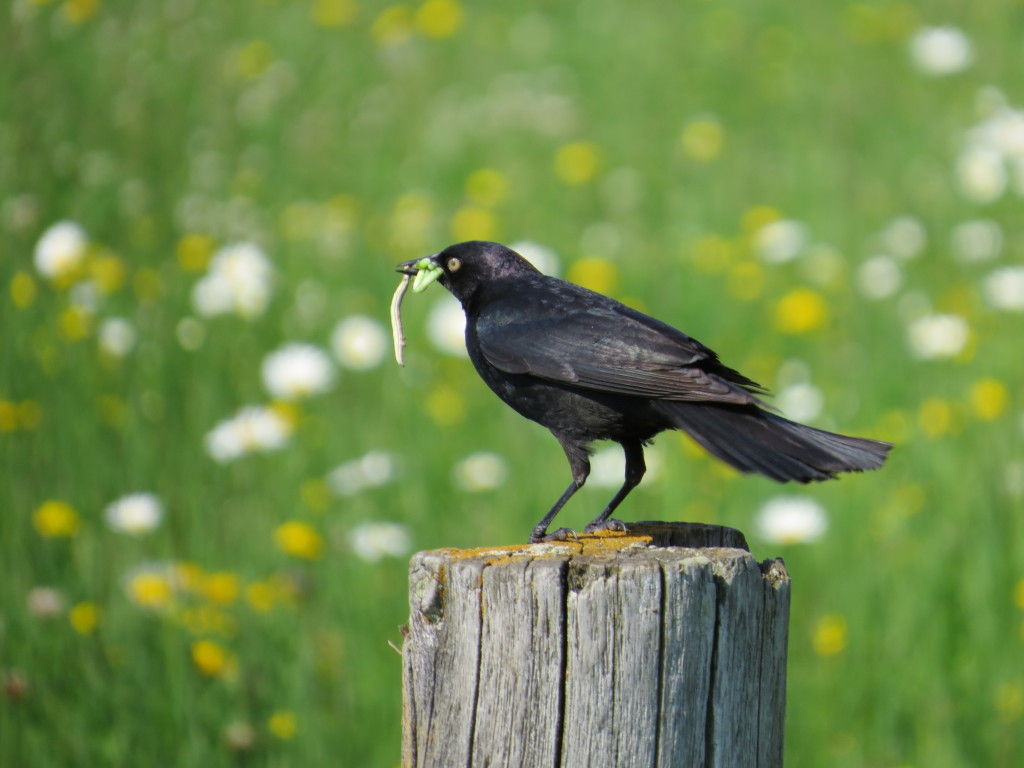
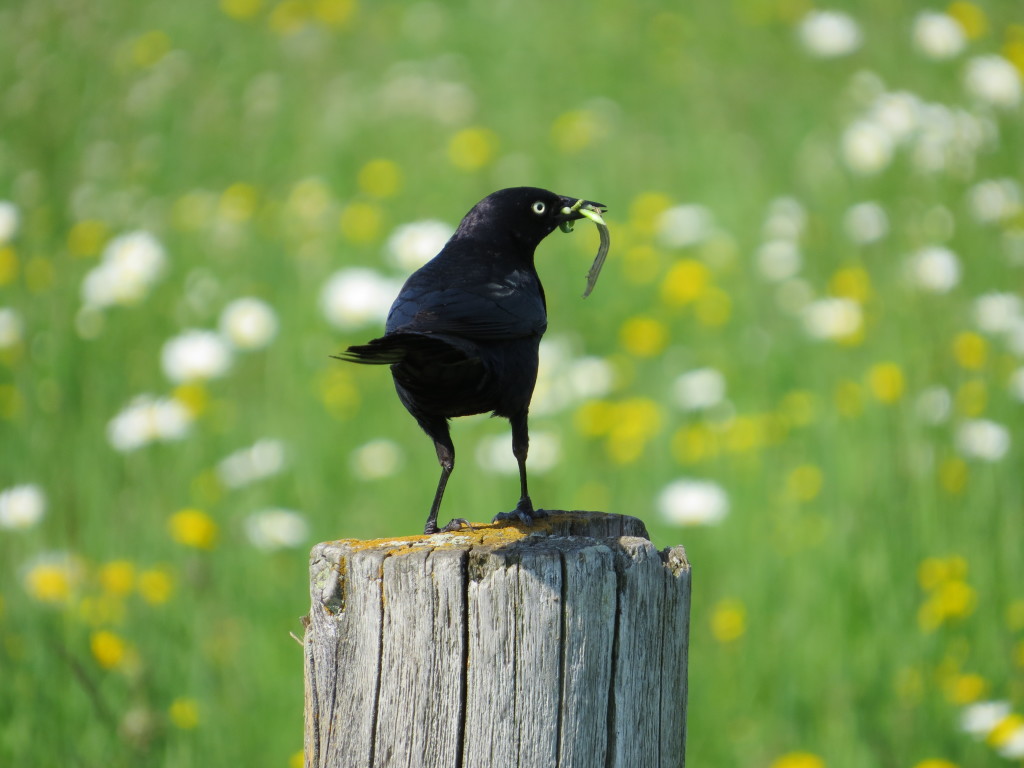
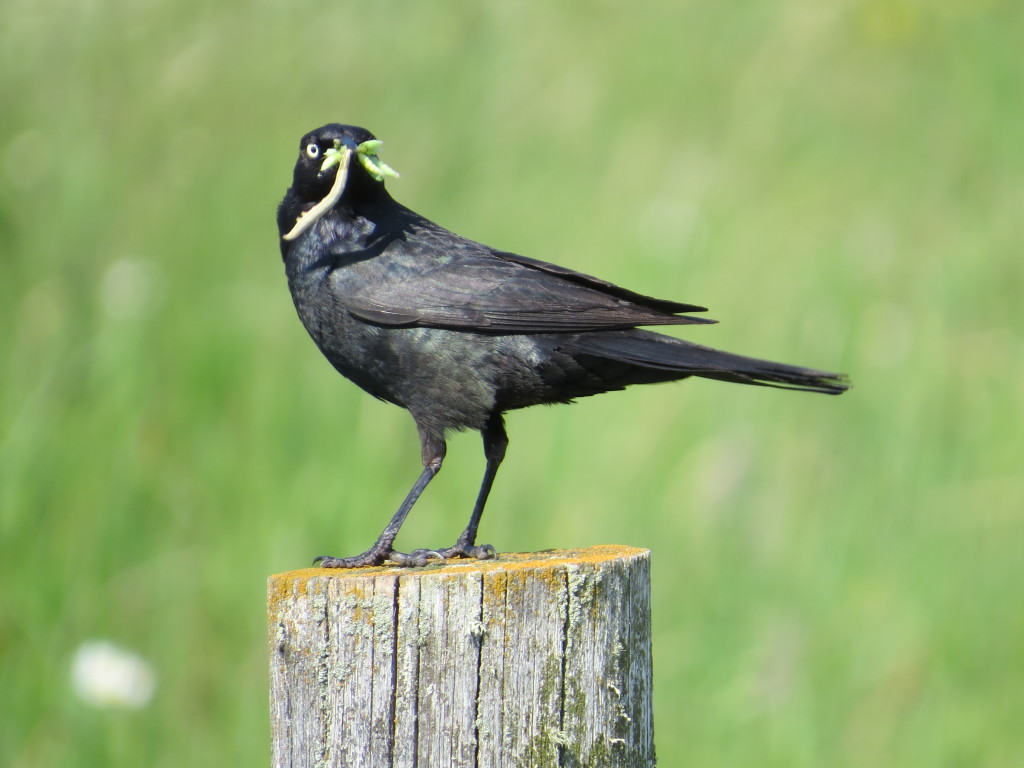 I had some really fun birding on this trip up north. I was not lifer hunting as there really are so few lifers I can still get. And none of them are easy. Or so I thought. In the next post I’ll tell you about a three-generation lifer that was delivered right to the doorstep.
I had some really fun birding on this trip up north. I was not lifer hunting as there really are so few lifers I can still get. And none of them are easy. Or so I thought. In the next post I’ll tell you about a three-generation lifer that was delivered right to the doorstep.

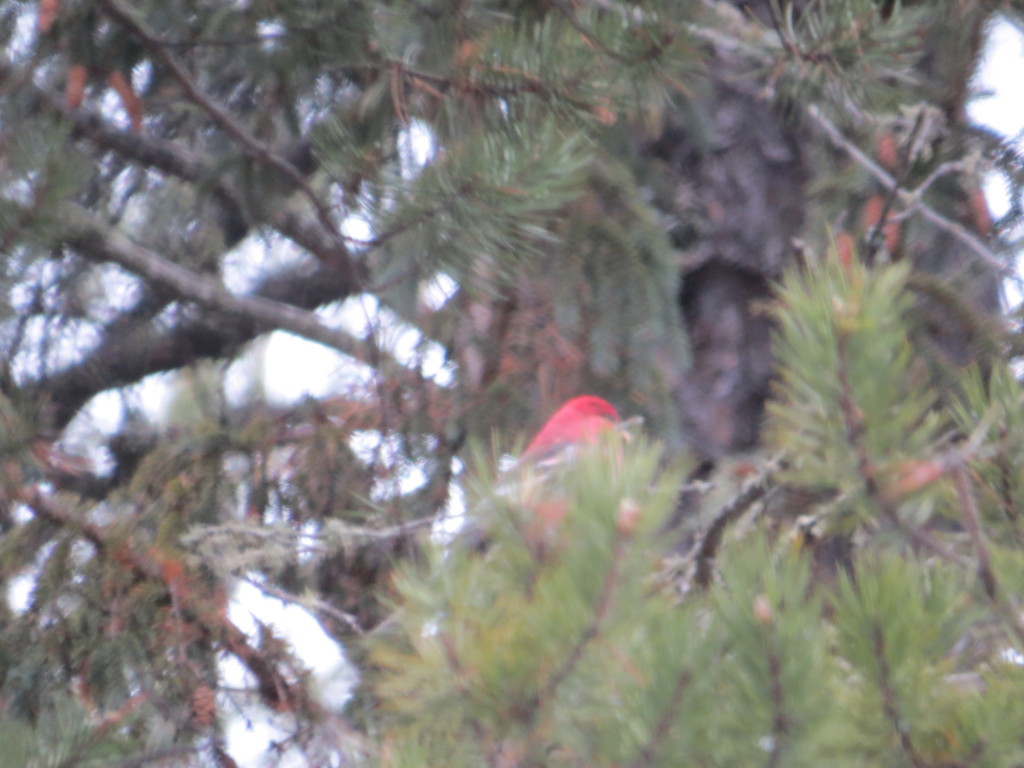
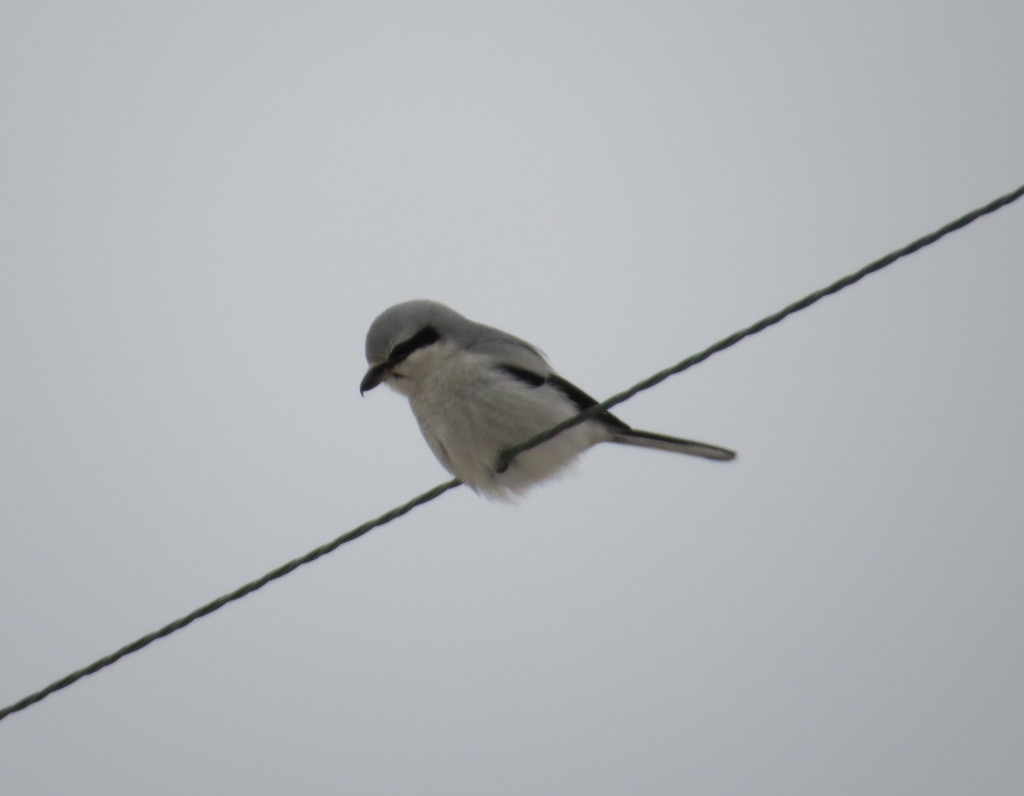
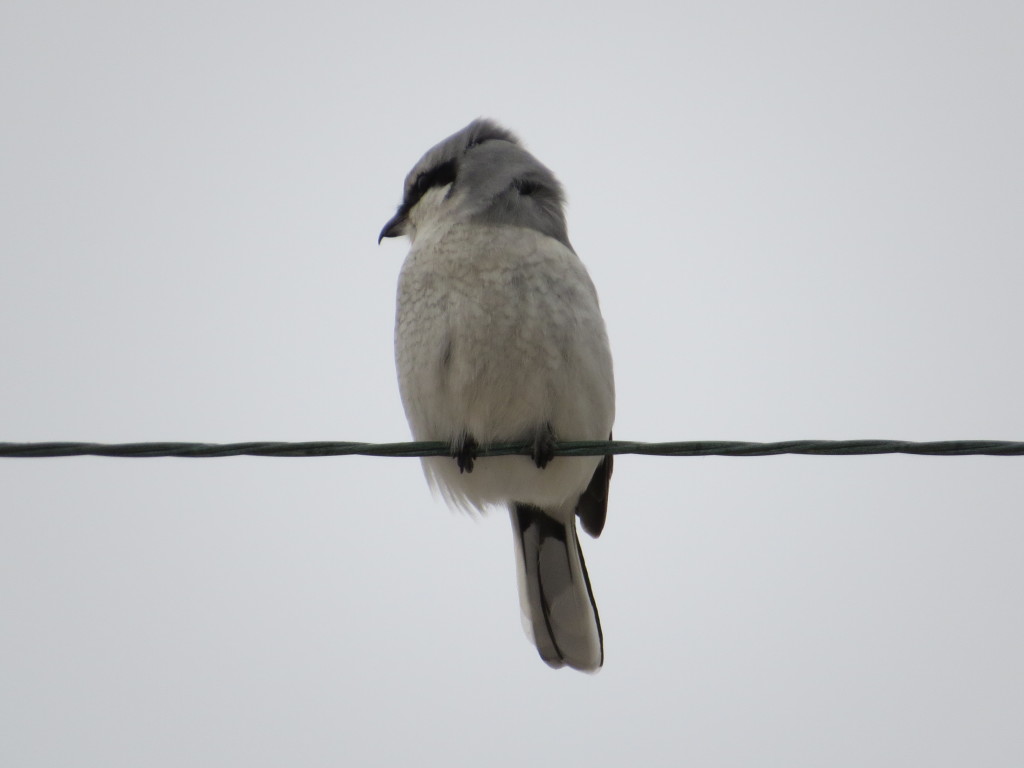
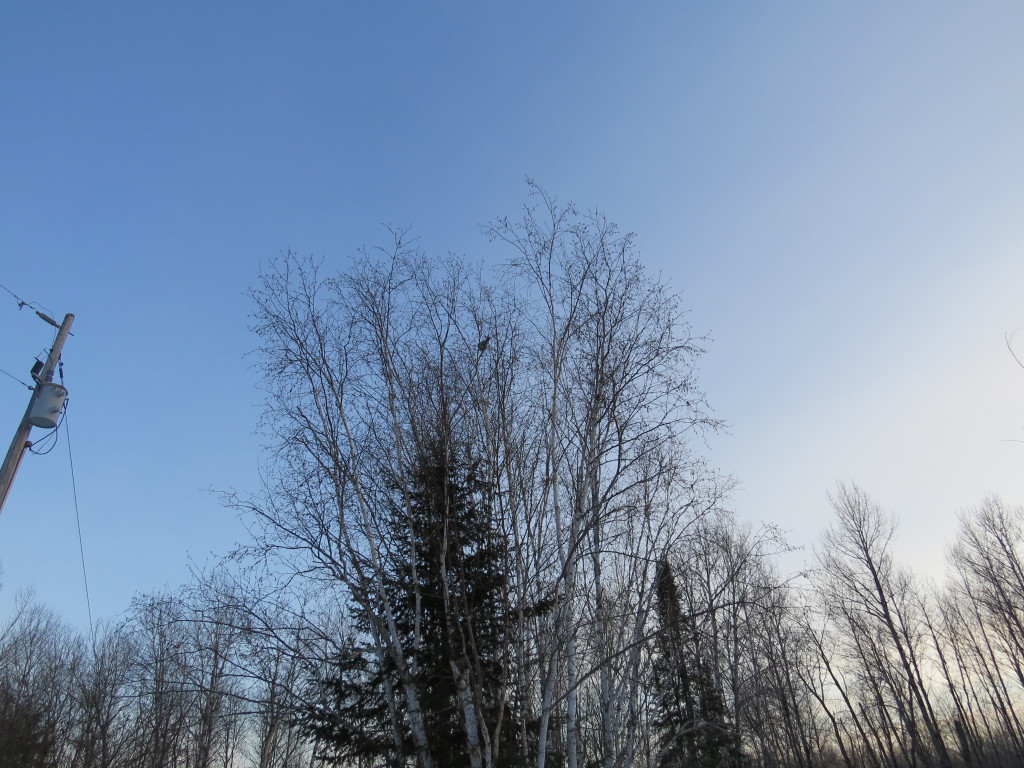
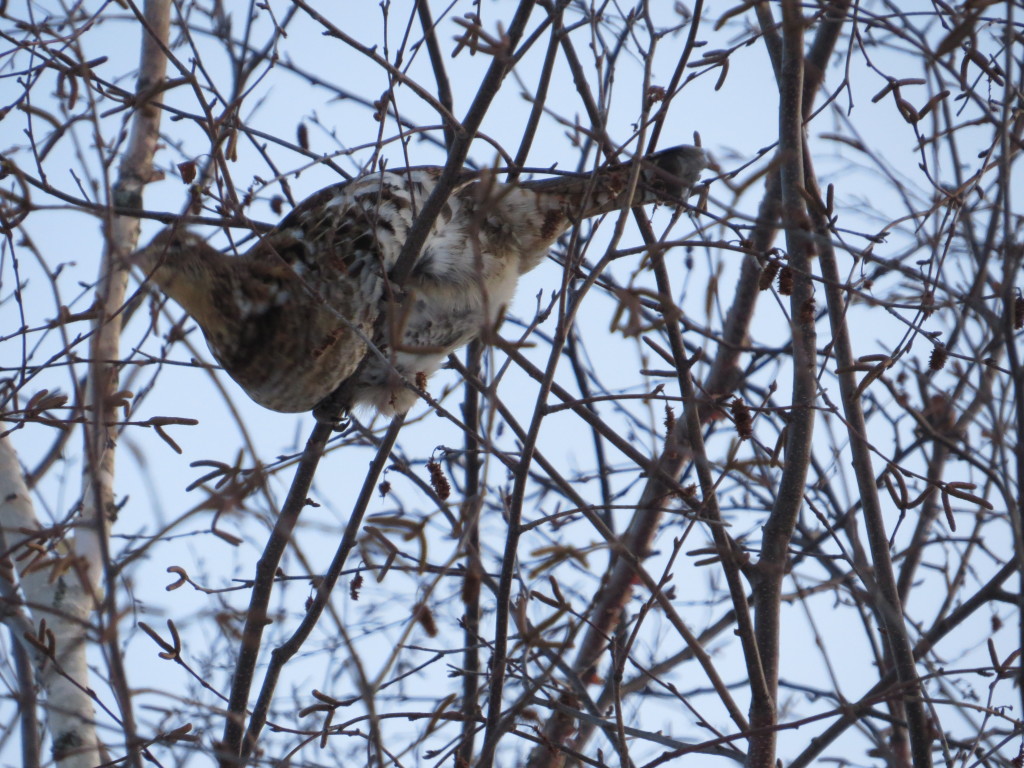
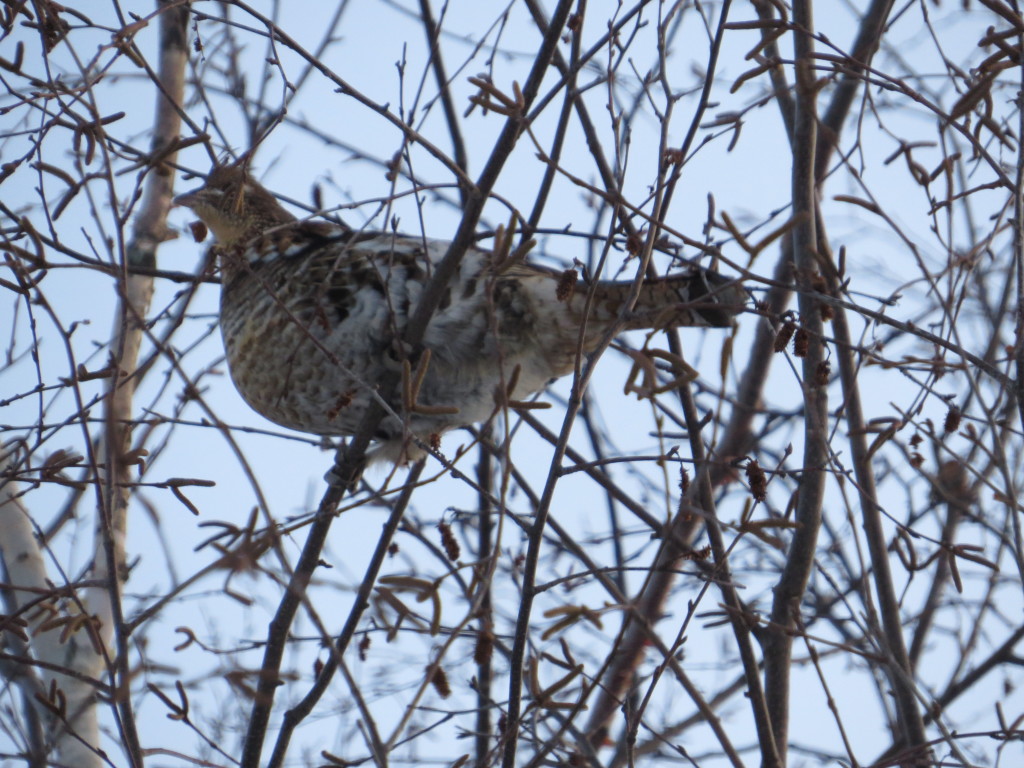
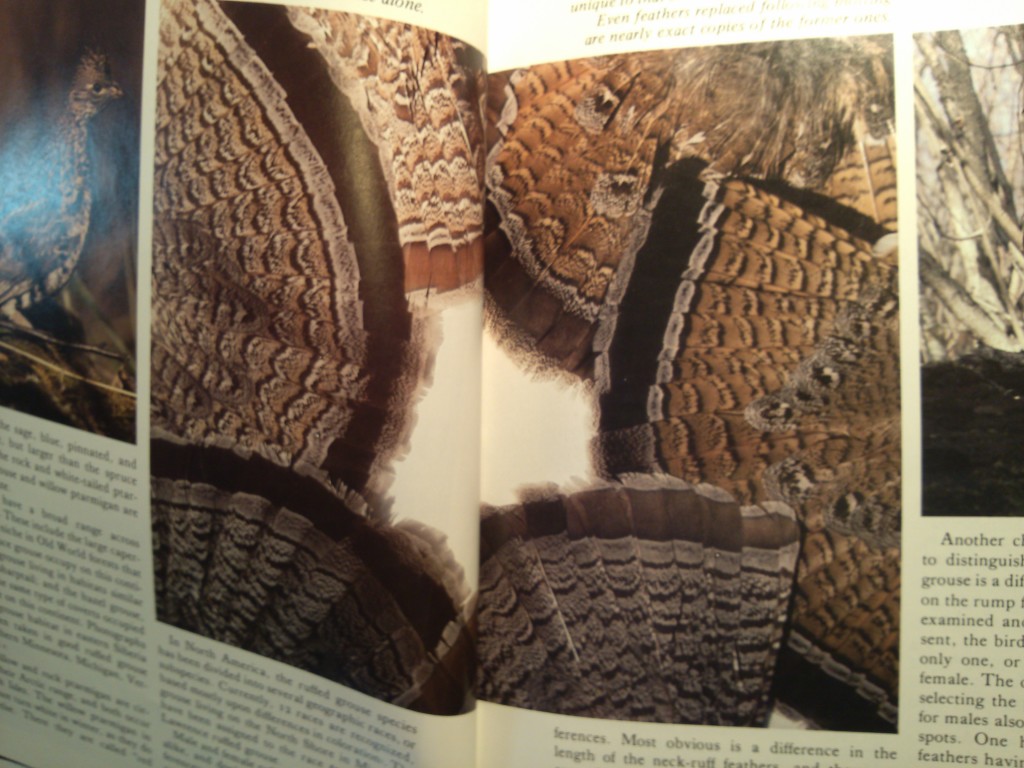 Fun fact from Gullion’s book: It is well-known that Ruffed Grouse completely burrow into powdery snow to keep warm on cold winter days. However, what is not well known is that the Great Gray Owl is the only known predator that can hear the grouse in their burrows and pluck them out of the snow! How cool is that?! Here I thought Great Grays just ate small rodents. As Gullion says, it’s fortunate for Ruffed Grouse that Great Gray Owls are not very numerous in northern Minnesota. If I ever witnessed such predation, I might have to hang up my binoculars and camera because it just wouldn’t get any better than that. Fortunately, Evelyn’s grouse doesn’t have to worry about such things yet with low snow totals. But he sure looks plump for the pickin’.
Fun fact from Gullion’s book: It is well-known that Ruffed Grouse completely burrow into powdery snow to keep warm on cold winter days. However, what is not well known is that the Great Gray Owl is the only known predator that can hear the grouse in their burrows and pluck them out of the snow! How cool is that?! Here I thought Great Grays just ate small rodents. As Gullion says, it’s fortunate for Ruffed Grouse that Great Gray Owls are not very numerous in northern Minnesota. If I ever witnessed such predation, I might have to hang up my binoculars and camera because it just wouldn’t get any better than that. Fortunately, Evelyn’s grouse doesn’t have to worry about such things yet with low snow totals. But he sure looks plump for the pickin’.